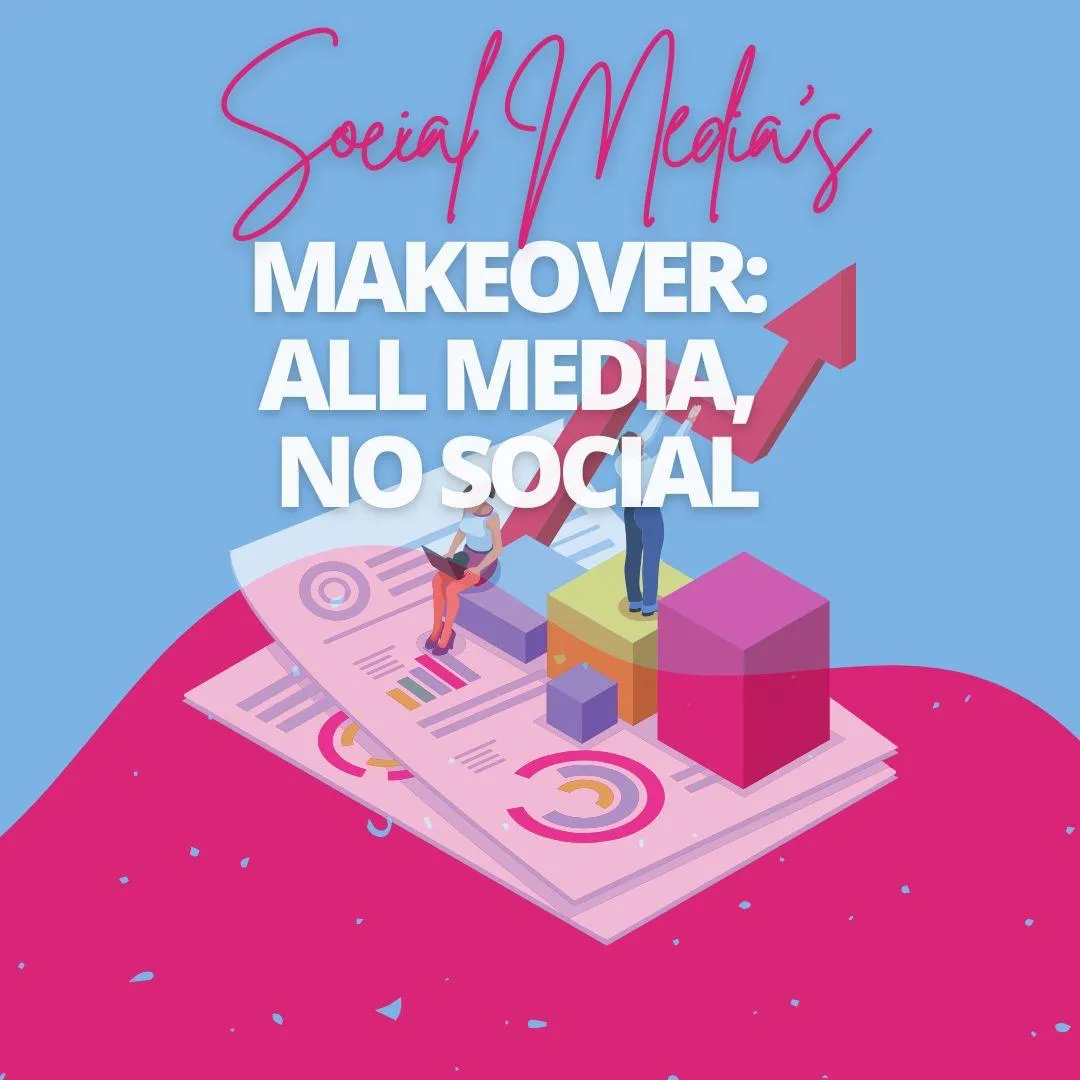
Social Media’s Makeover: All Media, No Social
For years, social media promised something unique: a place to connect, share, and stay in touch with people we know. But today, platforms like Instagram and TikTok are shifting toward something different—a media-first model, where the primary focus is no longer conversation but consumption. This shift is reshaping how we use these apps, what creators produce, and how brands succeed online.
From Engagement to Consumption

In the early days of Facebook and Instagram, success was measured by likes, comments, and shares. These interactions reflected genuine engagement between friends, family, and communities. Fast forward to today, and feeds feel less like conversations and more like TV channels.
On TikTok, the For You Page serves up videos from creators you’ve never followed, relying on algorithms to predict what you’ll watch next. Instagram has followed the same path, prioritizing Reels and “recommended” posts over content from people you know. Instead of scrolling through your cousin’s vacation photos, you’re more likely to see trending memes, viral dances, or branded entertainment. Social media is becoming less social and more like a broadcast network.
Why the Shift Happened
Several powerful forces explain this transformation:

Attention economics: Short-form video is the most effective format for capturing attention. Platforms know that a 15-second video with a strong hook will keep users engaged longer than a photo or status update.
Advertising and monetization: Brands want predictable ad space, and passive viewing creates more impressions than unpredictable social engagement. An endless feed of videos generates more ad slots than a static photo album.
Cultural habits: Users increasingly treat these platforms like on-demand entertainment rather than connection hubs. For many, TikTok has replaced TV as a source of both entertainment and news.
Platform competition: With YouTube, Netflix, and even streaming services vying for attention, social apps had to adapt—or risk losing their audience.
Together, these forces pushed platforms to optimize for content retention rather than conversation.
What This Means for Users
For everyday users, the shift feels subtle but significant. We spend more time watching than interacting. The infinite scroll, autoplay features, and algorithm-driven feeds encourage passive behavior. Instead of commenting on a friend’s post, we swipe to the next video.
This has consequences:
Less community – Fewer updates from friends mean weaker social connections.
Shorter attention spans – Quick, snackable videos make longer, more thoughtful content harder to focus on.
Risk of misinformation – Bite-sized, viral clips often lack context, yet they shape how people learn about news and world events.
In many ways, social platforms are evolving into personalized TV stations, where entertainment outweighs communication.
What It Means for Creators and Brands
For creators and marketers, the rules of success have changed. Engagement metrics like likes and comments are no longer the north star. Platforms now reward:
Views – How many times your content is watched.
Watch time – How long people stay with your video before scrolling.
Retention – Whether your content convinces someone to stick around for more.
This means creators must design content for algorithms, not just audiences. Strong hooks in the first 3 seconds, visually compelling storytelling, and short-form videos optimized for vertical mobile screens are essential.
Brands, too, need to rethink strategy. Instead of focusing on follower counts, they should embrace:
Shoppable videos that turn passive consumption into instant sales.
Native advertising that blends seamlessly into feeds.
High-volume, short content production that matches the pace of the algorithm.
Those who adapt will thrive. Those who don’t risk invisibility.
The Takeaway
Social media is no longer primarily about connecting—it’s becoming just media. For users, this means endless entertainment at the swipe of a finger. For creators and brands, it means competing in a new ecosystem where attention is the ultimate currency.
The platforms that once built their empires on friendships and social networks are now reinventing themselves as media-first machines. The winners in this new era will be the ones who recognize the shift, adapt their strategies, and learn how to thrive in a world where “social” increasingly takes a back seat to “media.”
